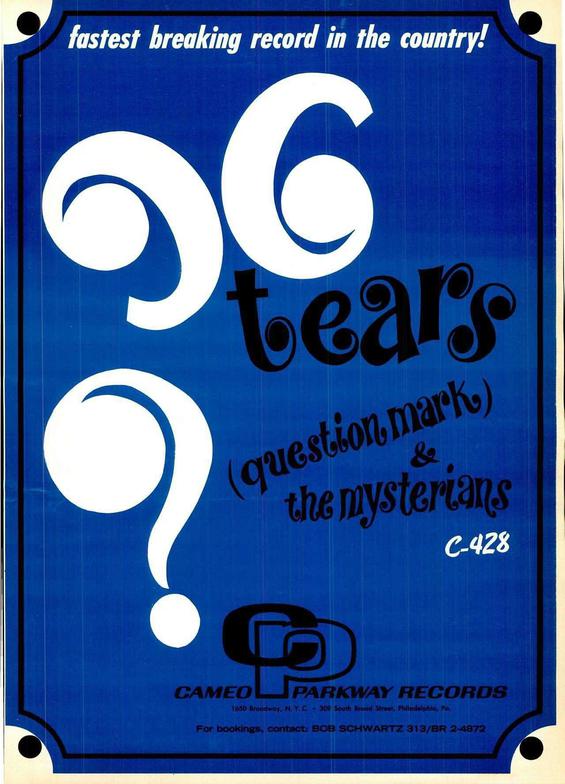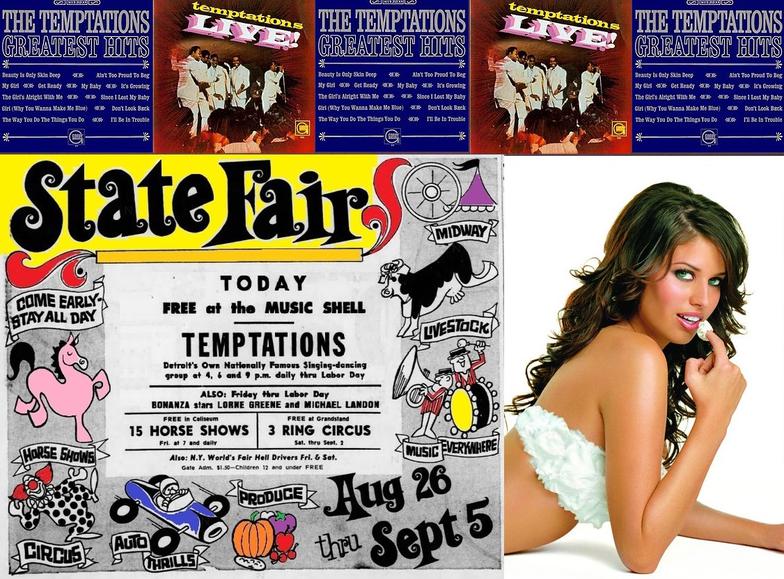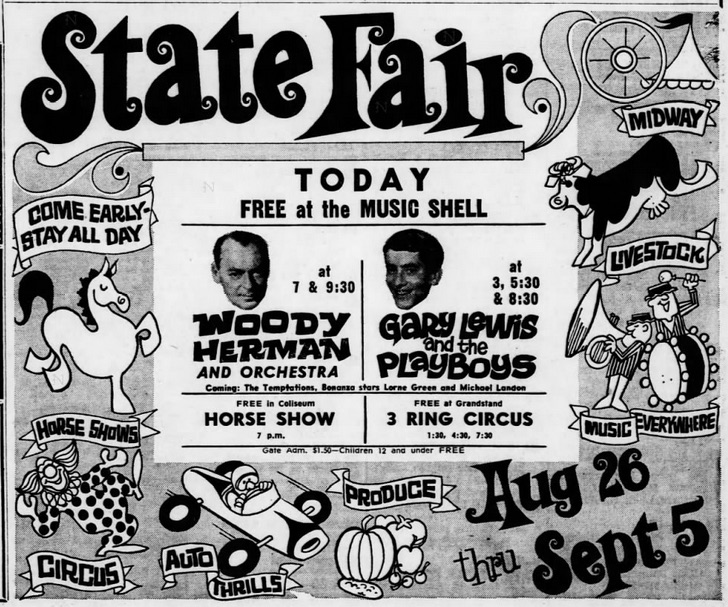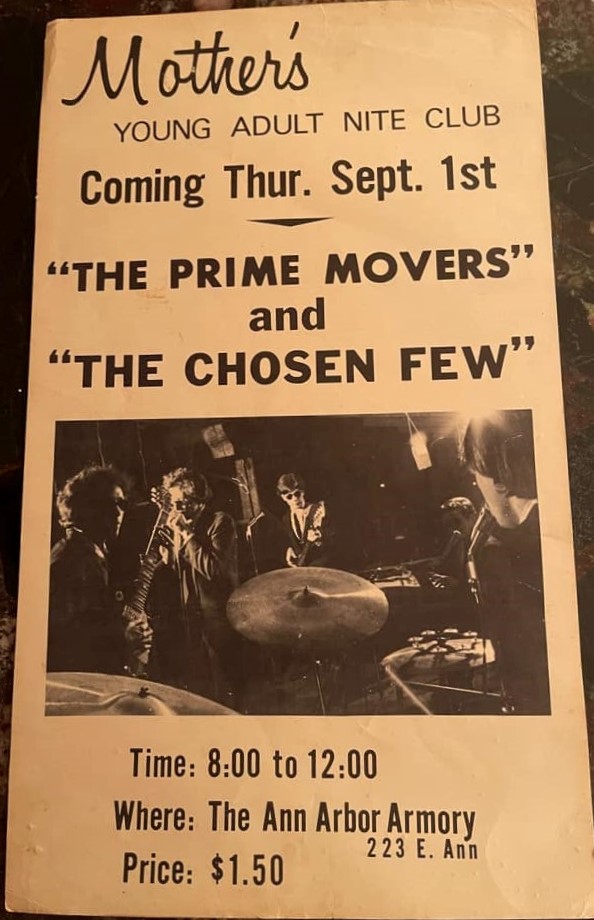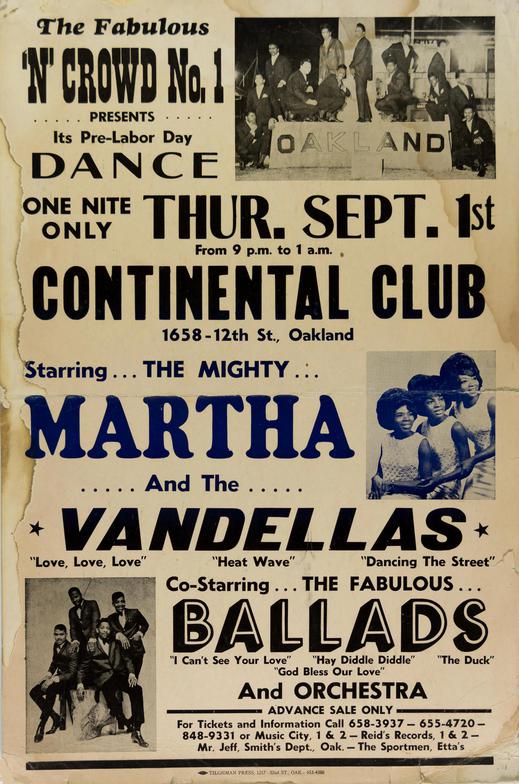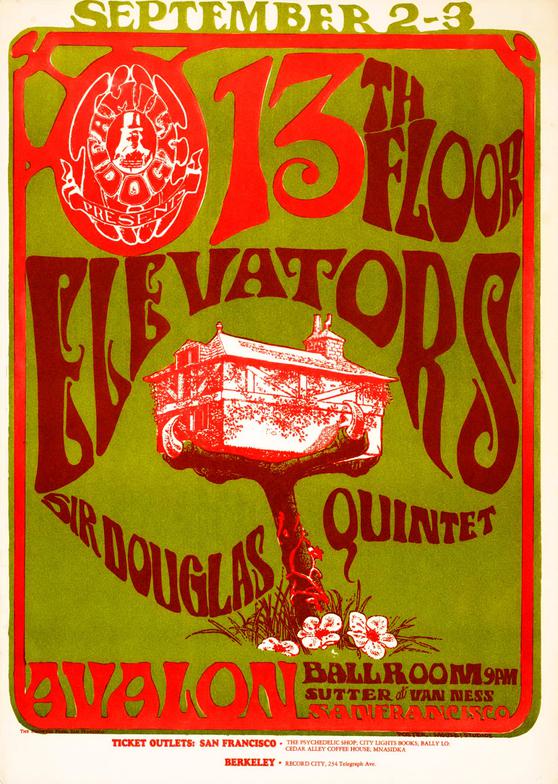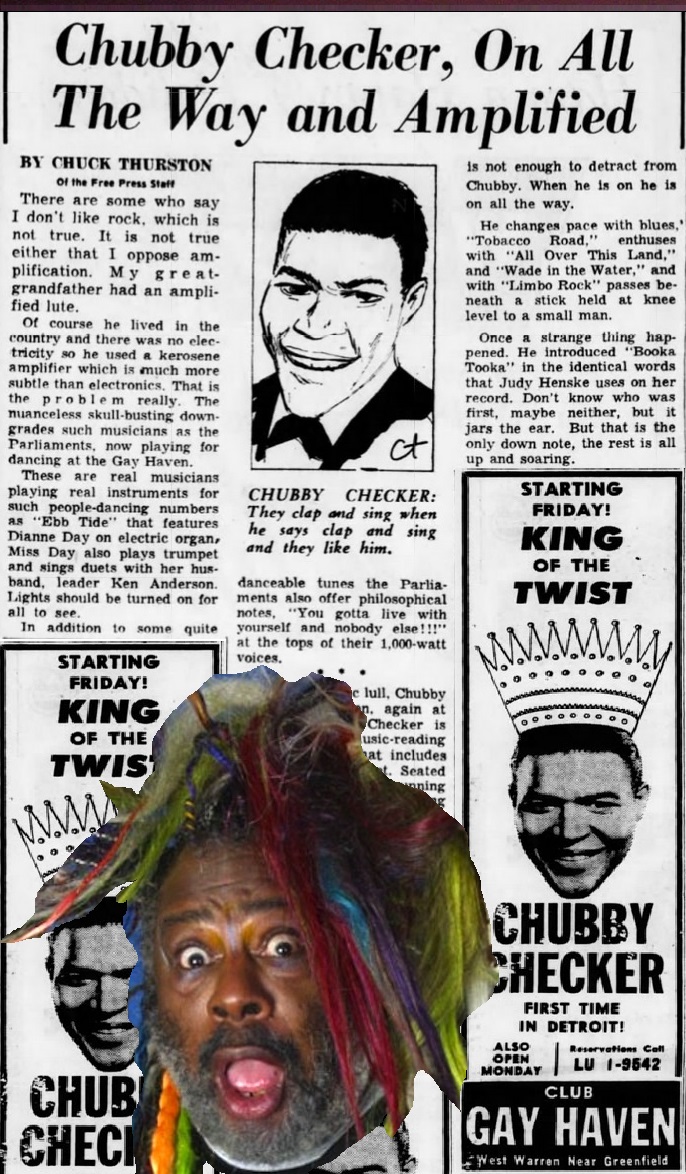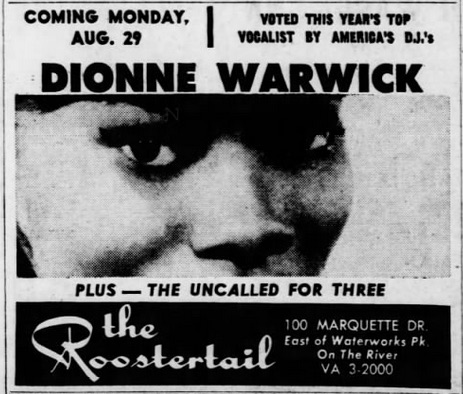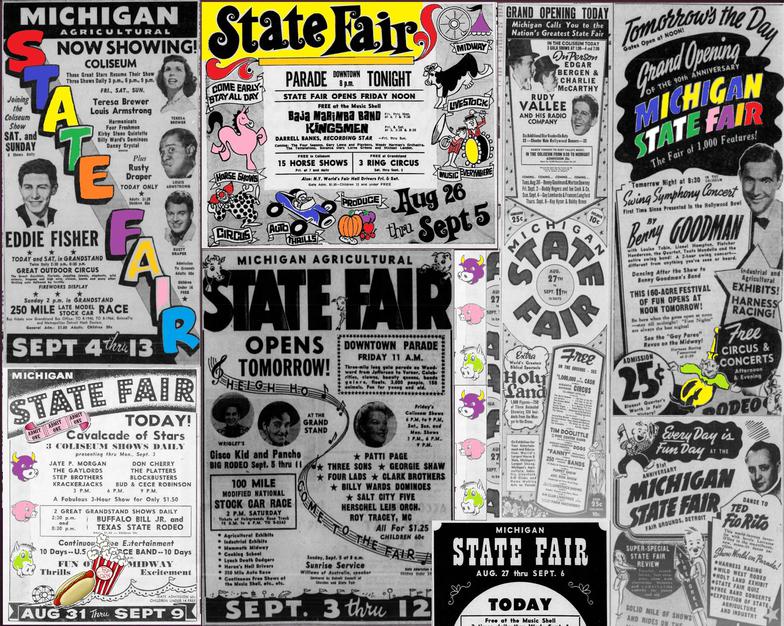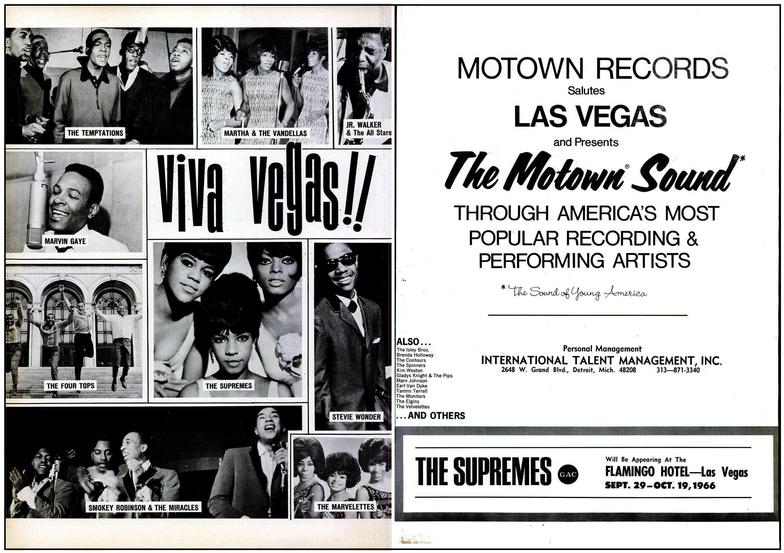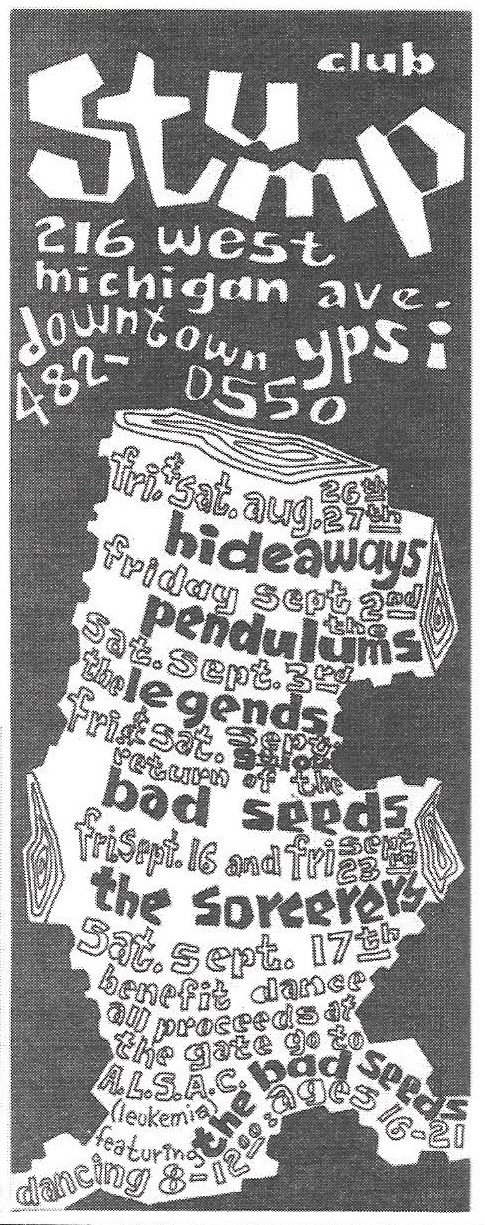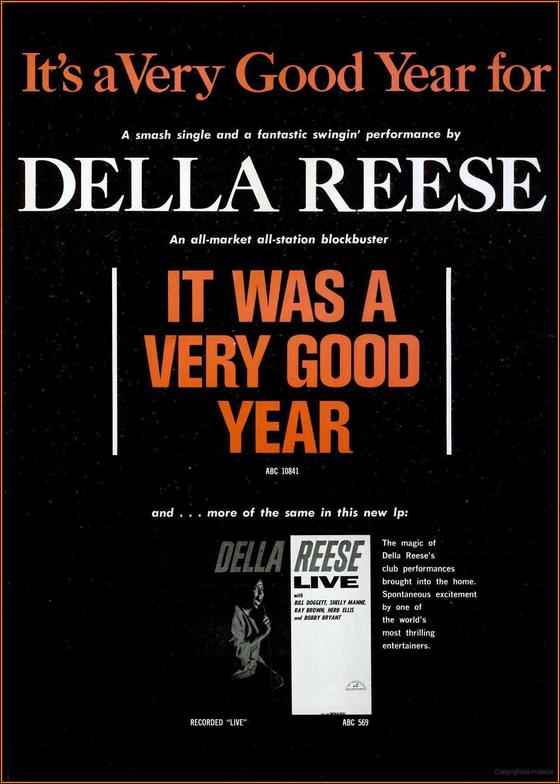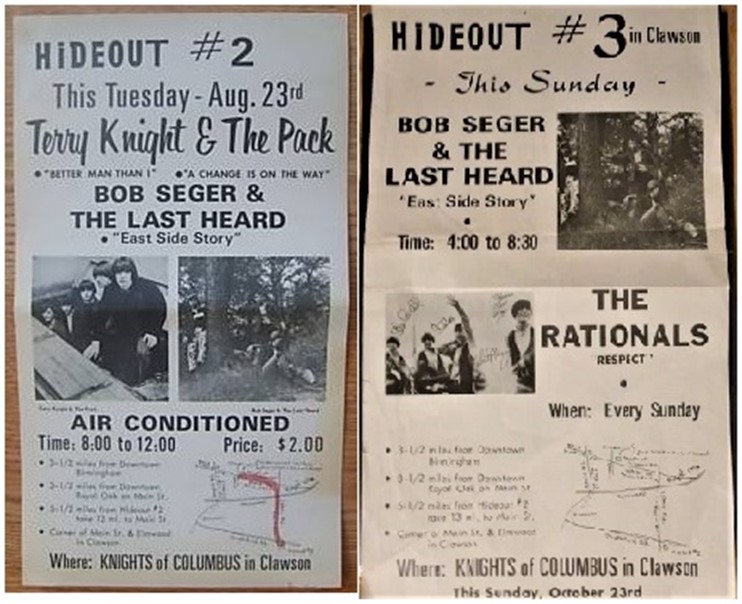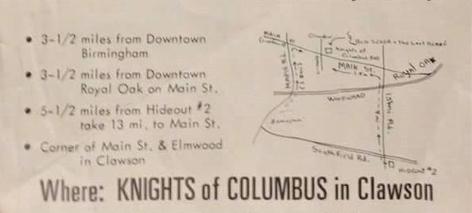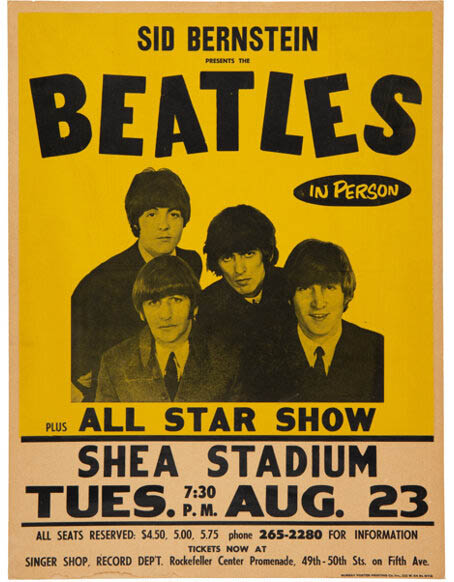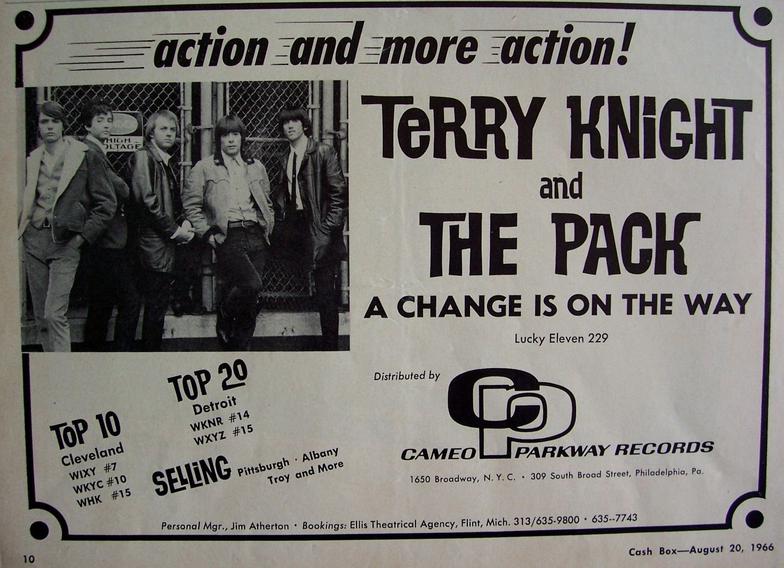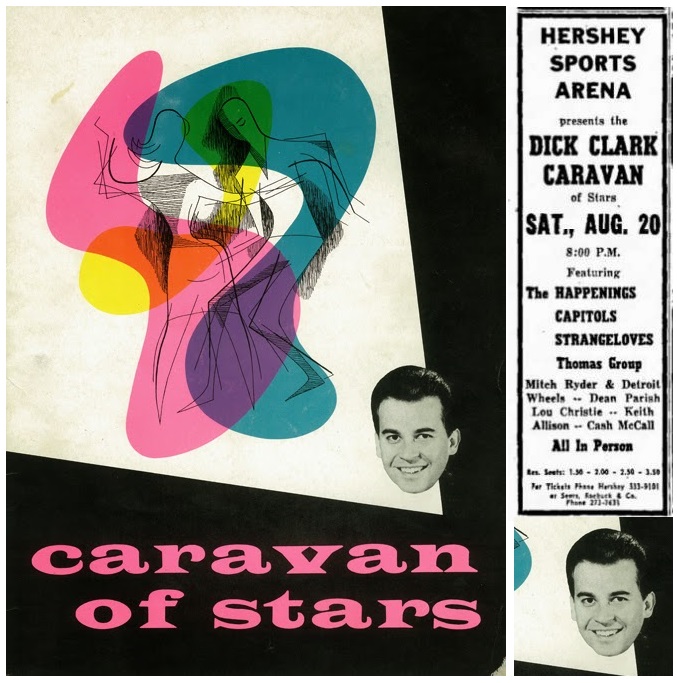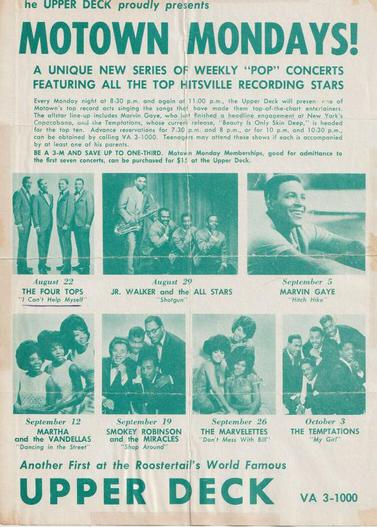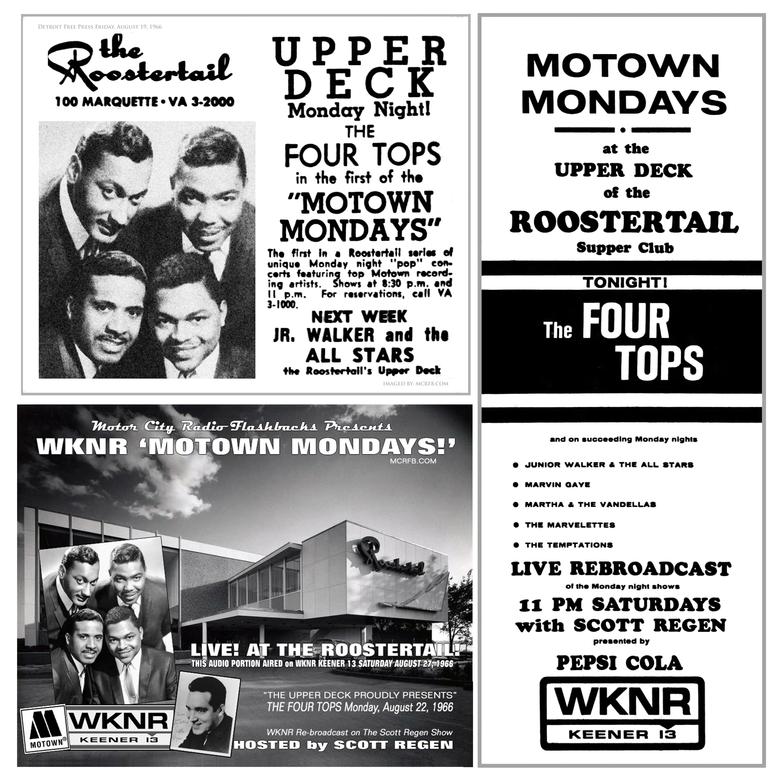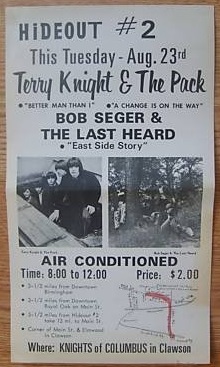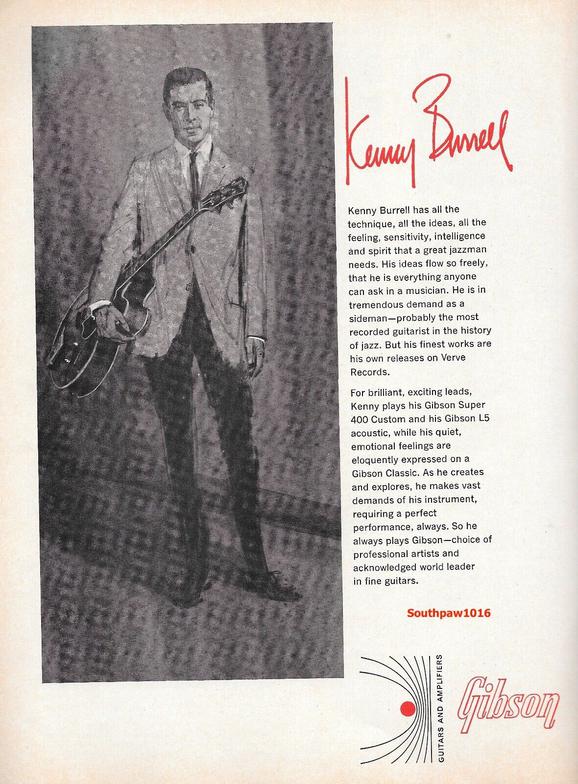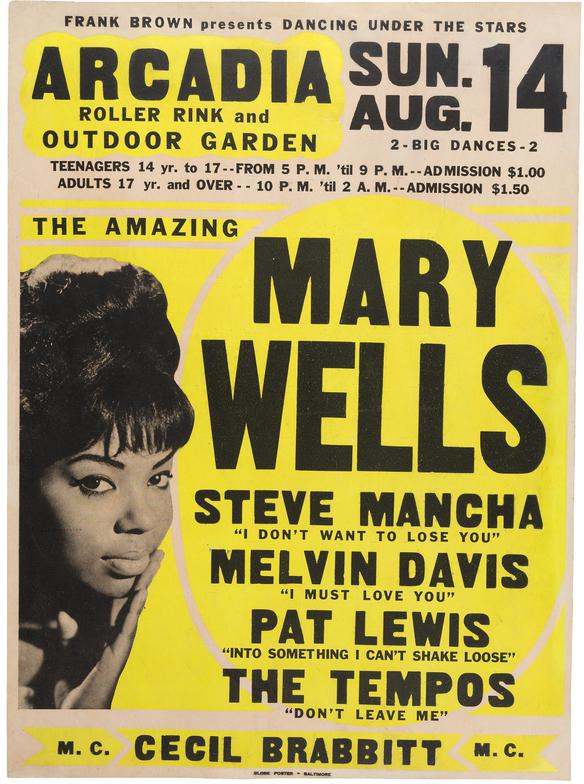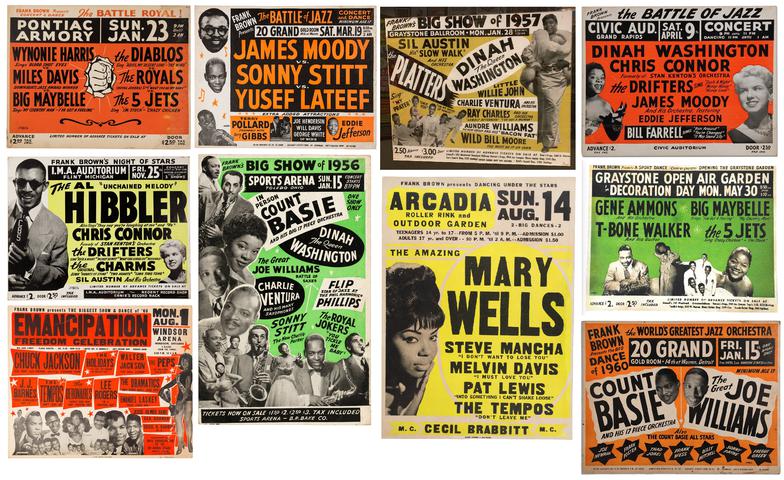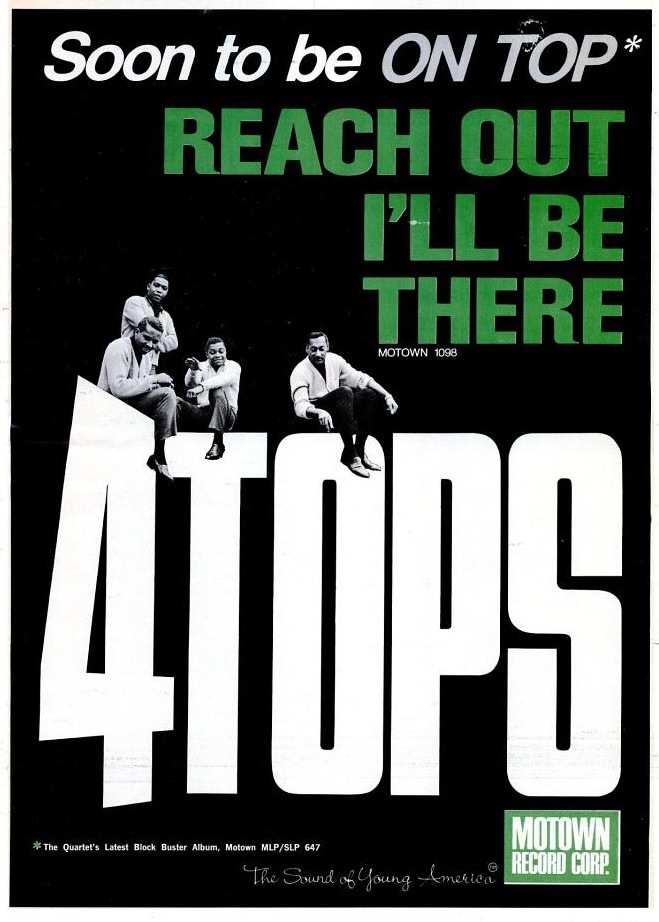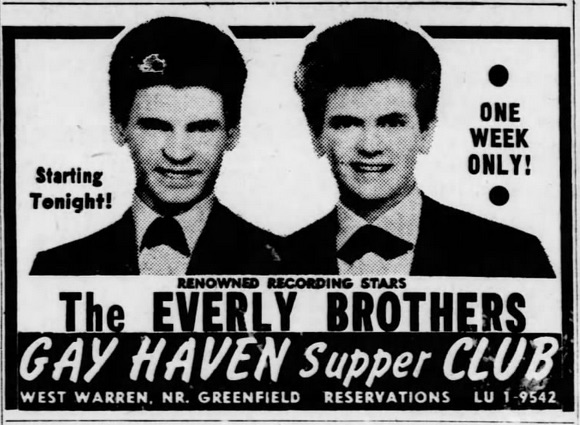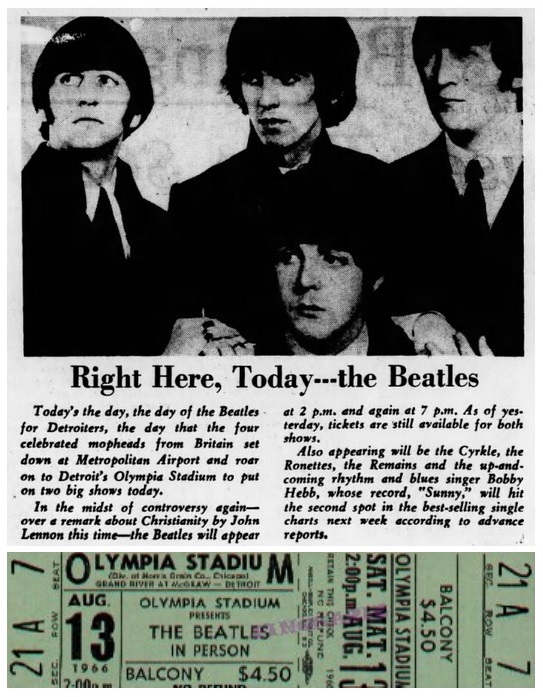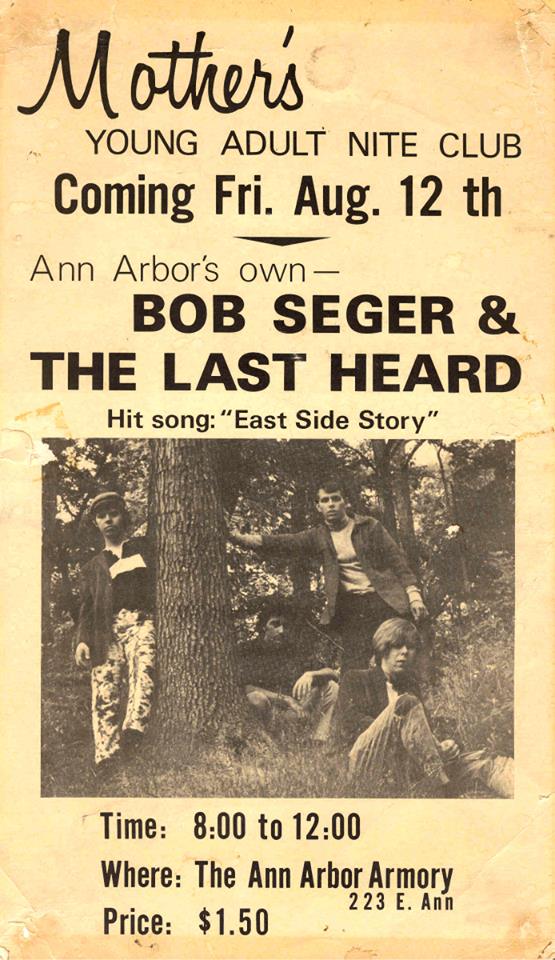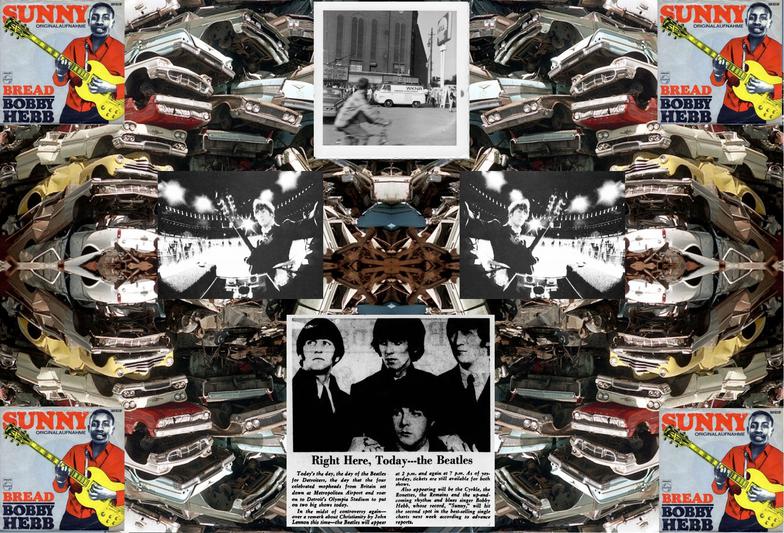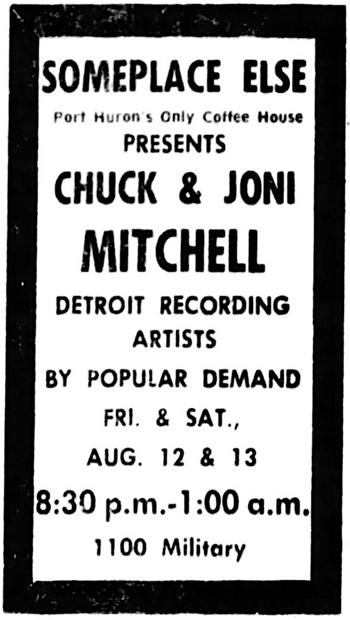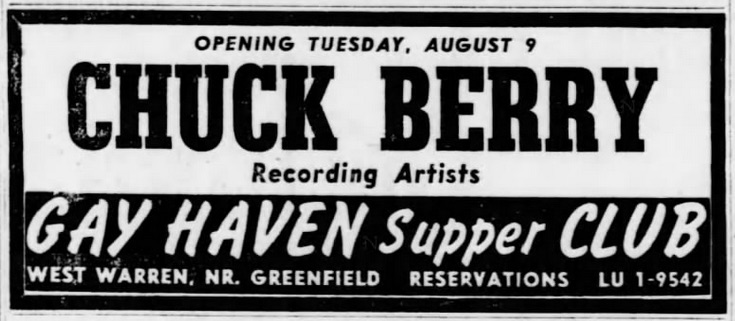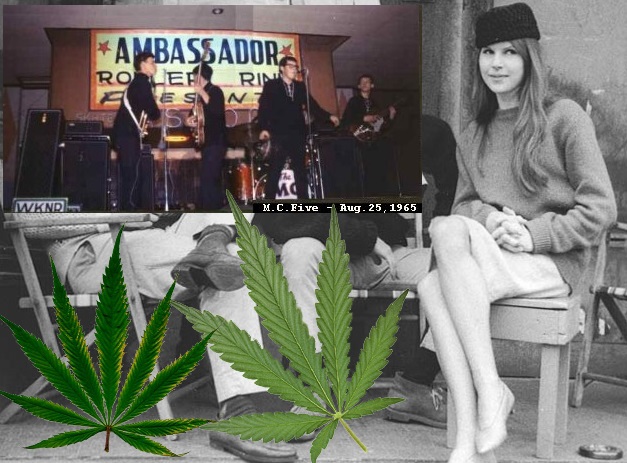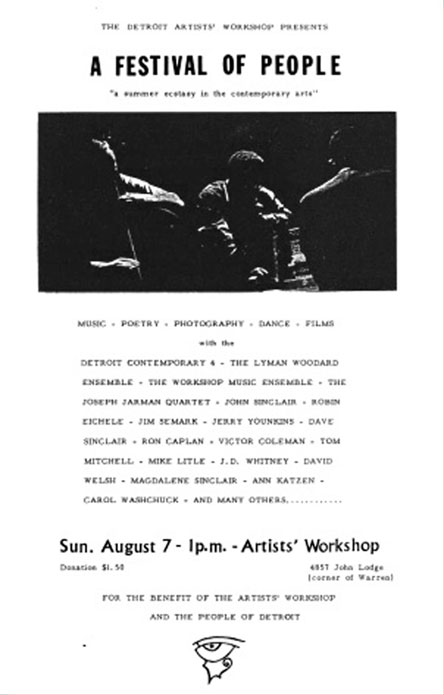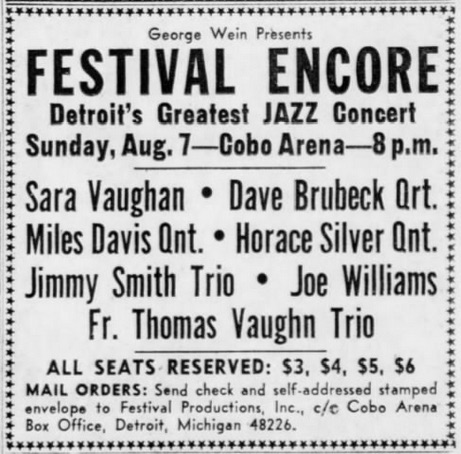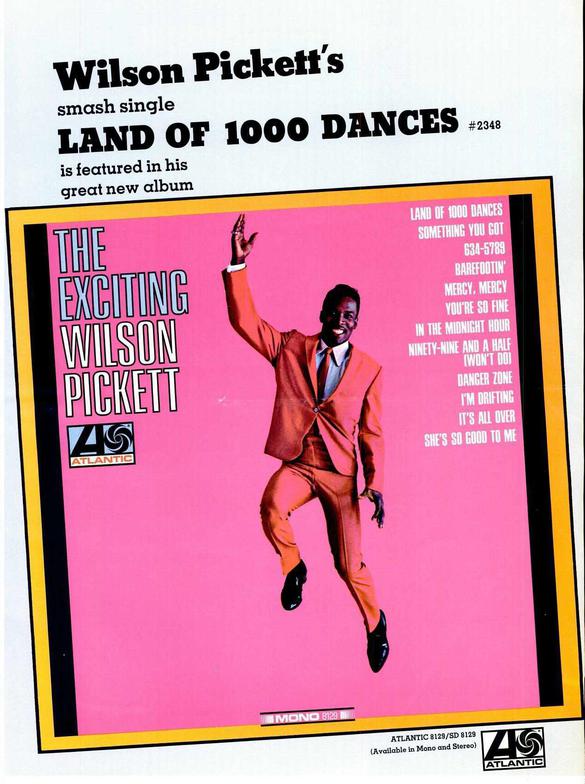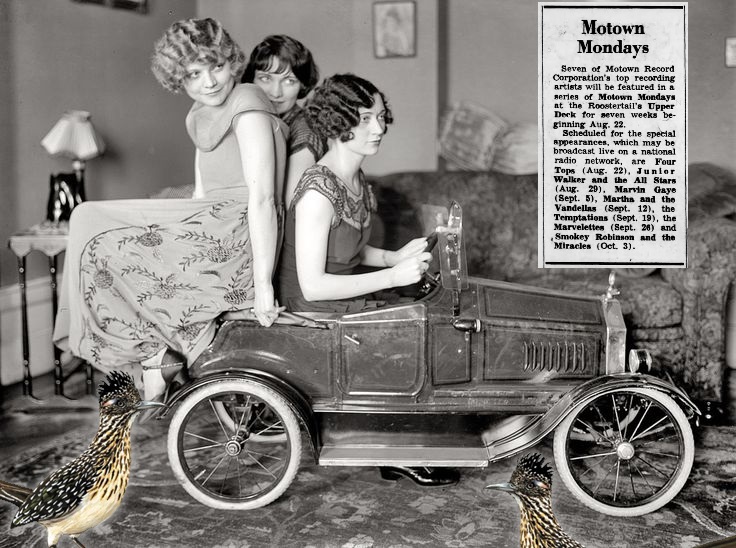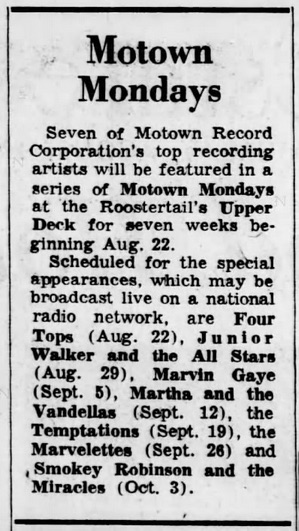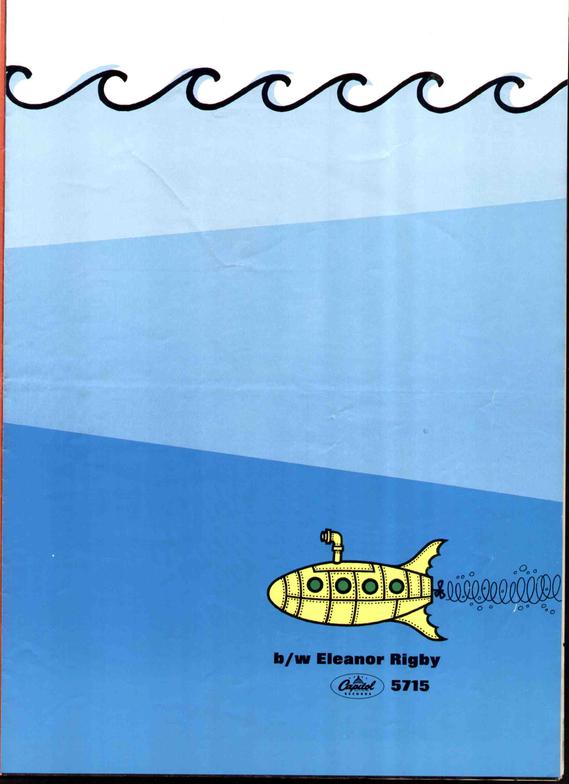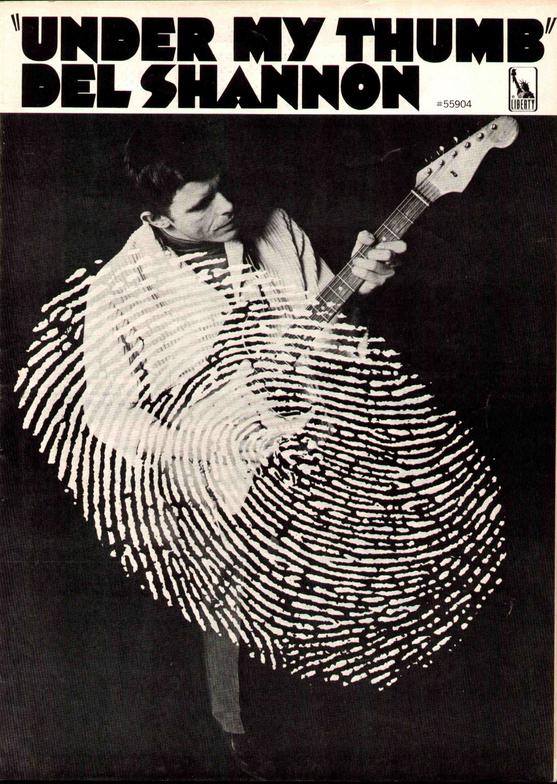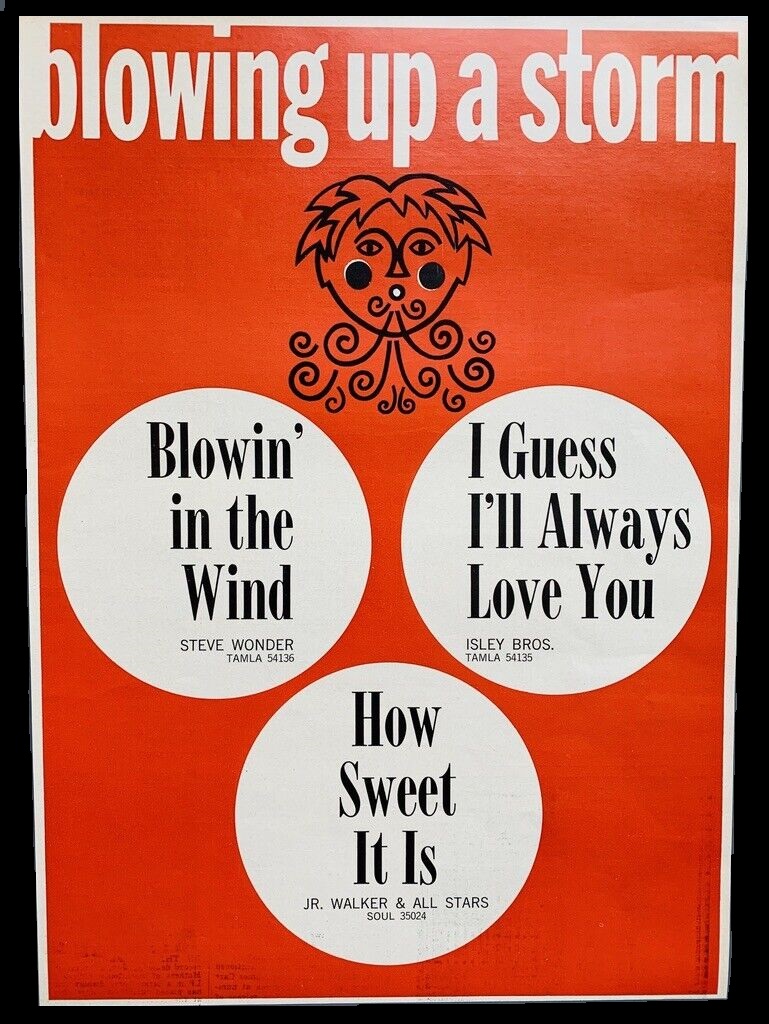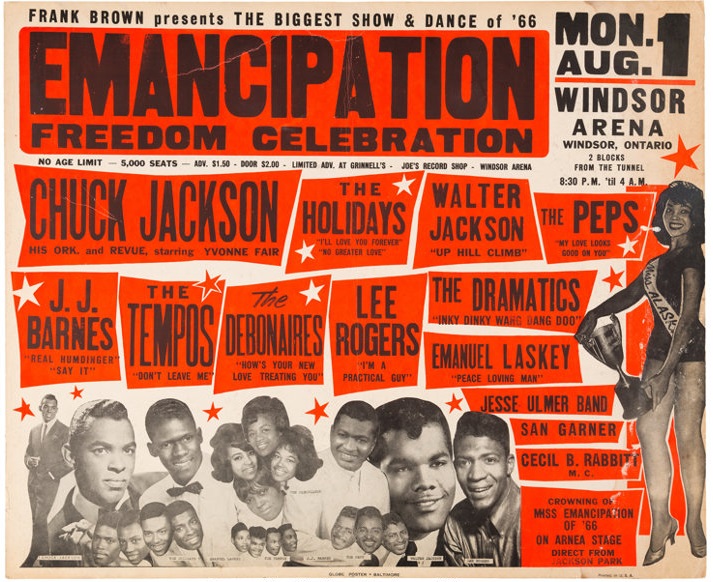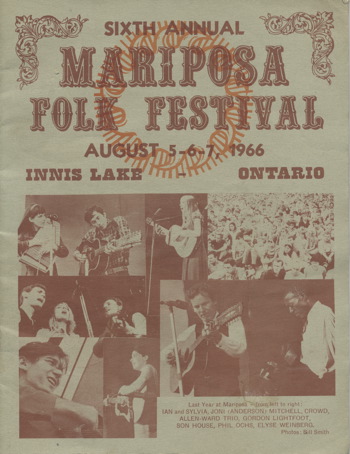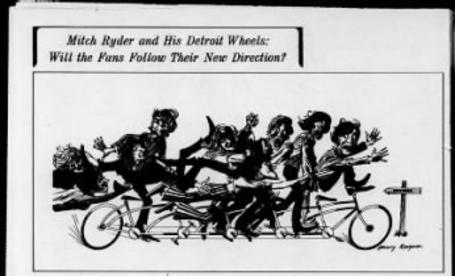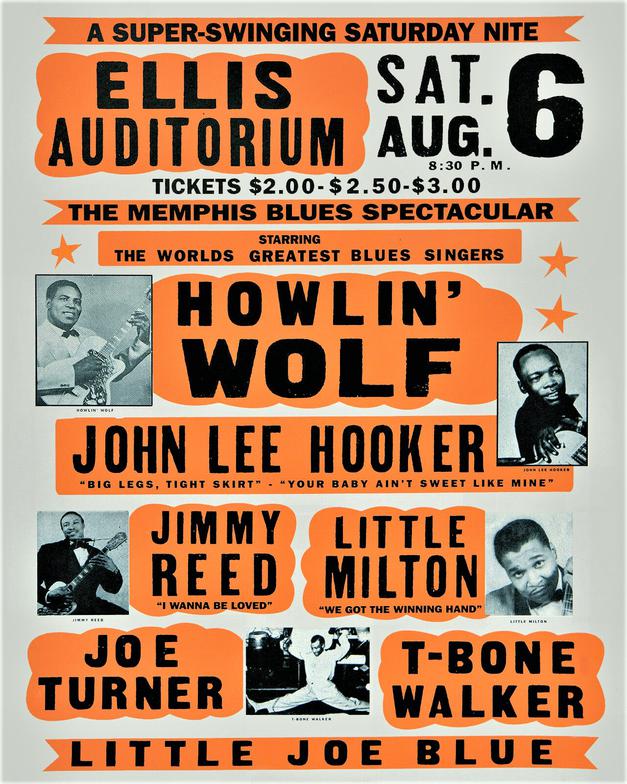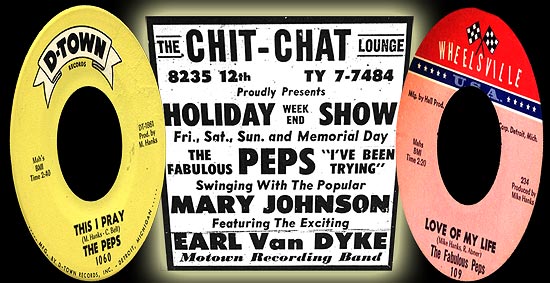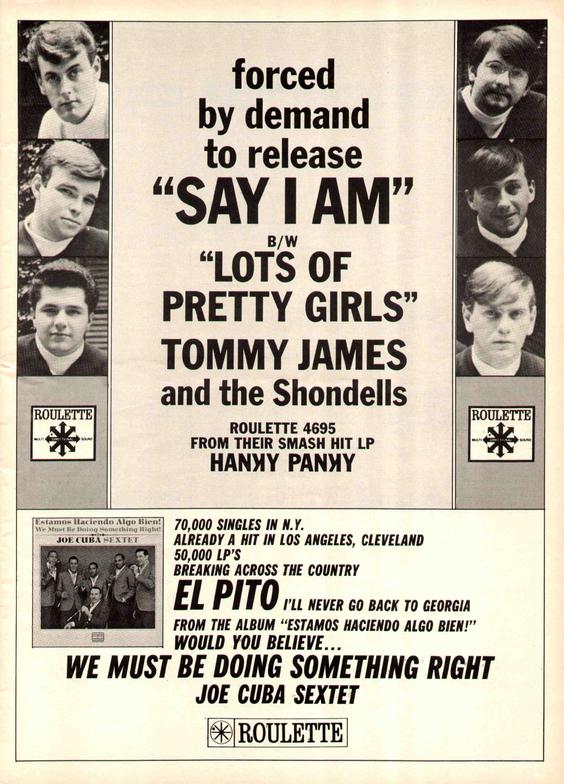Splatt Gallery
Double click here to add text.
Splatt Gallery's History of Michigan Music Posters
Volume Two - 1964-1966 - Page Sixteen
***********************************************************
Volume Two - 1964-1966 - continues - HERE
Full-page Cameo-Parkway Records ad in the September 3, 1966 issue of Billboard magazine, about seven weeks before this single by a group of Mexican migrant kids from Saginaw, Michigan with an affinity for Japanese movies, hit #1 on the Billboard Hot 100 chart.
Decades before Prince changed his name to a squiggly glyph, young Rudy Martinez changed his to “?”. Rudy, the son of Mexican migrant workers who had settled in the Saginaw-Bay City region in Michigan, had dreams of becoming a dancer and found his outlet by joining up with a local band of four other immigrant dreamers called The Mysterians (named after a 1957 Japanese sci-fi movie).
Their first record, “96 Tears” , released in August 1966, propelled the band into the classic rags-to-riches story, although unlike so many others, they have been able to sustain and are still active today.
? & the Mysterians – 96 Tears (live on Swingin’ Time) (1966)
https://www.youtube.com/watch?v=xS7qvxm3FbM
Also appearing at the 1966 Michigan State Fair (along with the cast of the TV western, Bonanza) were the Temptations, for five days, September 1-5, 1966. This was a banner year for the Motown group, with four #1 hits, the release of a Greatest Hits album, and a live album recorded at The Roostertail Club.
The Temptations – Get Ready (1966)
https://www.youtube.com/watch?v=uOzFoH6mUHQ
An ad for the 1966 Michigan State Fair, with the second Michigan appearance by Gary Lewis & the Playboys on August 30, 1966.
Poster/flyer for Mother’s in Ann Arbor, Michigan, with the Prime Movers and the Chosen Few on September 1, 1966.
A Tilghman Press poster with “the Mighty” Martha & the Vandellas at the Continental Club in Oakland, California on September 1, 1966.
Poster by Stanley Mouse and Alton Kelley for the first San Francisco appearance of the 13th Floor Elevators from Austin, Texas, September 2-3, 1966.
Newspaper ad for Chubby Checker at the Club Gay Haven in Detroit, Michigan for ten nights, September 2-11, 1966. Contrary to the ad’s claim, this was not his first time in Detroit, he had performed at least seven times in Detroit, as well as shows in Lansing and Grand Rapids, although his last previous time was four years ago, in April 1962.
We don’t know if Chubby Checker acknowledged that The Twist had been invented in Detroit by Hank Ballard. but we do know that the opening act at these shows was The Parliaments due to a newspaper review that praises the group as “real musicians playing real instruments for people-dancing numbers” and “also offer philosophical notes, ‘You gotta live with yourself and nobody else!!!’ at the tops of their 1,000-watt voices.”
That’s how they do go on in those days.
The Parliaments – Look at What I Almost Missed (1968)
https://www.youtube.com/watch?v=F1UqvytfAF8
An ad for Dionne Warwick at the Roostertail in Detroit for 12 nights, August 29, 1966 through September 10th.
Attendance at the Michigan State Fair, from August 26, 1966 through September 5th, reached its historical peak at 1.2 million in 1966. One of nation’s oldest state fairs, it came to an end in 2008 (resurrected in 2012, at the Novi convention center which can never match the 160 acres at Woodward and 8 Mile with its three Neo-Classical Revival buildings, The Agricultural Building, the Dairy Cattle Building, and the Riding Coliseum).
The other thing that peaked in 1966 was America’s obsession with faux-Latin music, the likes of Herb Alpert & His Tijuana Brass, Sergio Mendez & Brazil ’66, and, probably the worst of them all, The Baja Marimba Band, who made an appearance at the 1966 Michigan State Fair.
Herb Alpert & The Tijuana Brass – Tijuana Taxi (1965)
https://www.youtube.com/watch?v=cK5pl6W2CFE
The August 27, 1966 issue of Billboard magazine was one their “salute” or “tribute” issues which they could count on generating plenty of full-page ads revenue as everyone in the industry would want to get their name seen, attached to either a star performer, a big wig at a label, or respected studio or pressing plant. The object of the praise and adulation in this issue was the town of Las Vegas.
Motown took out this two-page spread that included some nice shots of their first-string team of artists, a mention of twelve additional groups, and the announcement that the Supremes would be appearing on the strip, for a three-week stand at the Flamingo Hotel, September 29th through October 19th.
Poster/ad by Mickey Kress, who ran a small club in Ypsilanti called Club Stump, with a schedule of events that starts with a group called the Hideaways, August 26-27, 1966, followed by the Pendulums, the Legends, the Bad Seeds, and the Sorcerers. Kress would later manage the Fifth Dimension club in Ann Arbor.
A full-page ABC Records ad in the August 27, 1966 issue of Billboard magazine for the fourth live album and the single "It Was a Very Good Year" by Della Reese. The single peaked at #99 on the Billboard Hot 100 singles chart, her final charting record.
After much head-scratching and teeth gnashing, we have determined that the poster on the left has a major error on it that may have led to some of the confusion regarding Dave Leone’s Hideout clubs, but ultimately it helps solve all confusion regarding Hideout #2 and Hideout #3.
The error on the poster on the left is that, at the top, where it says “Hideout #2”, it should be “Hideout #3”. Both posters are from 1966, the one on the left is August 23, and the one on the right is October 23. The one on the right is correct as “Hideout #3” and “in Clawson” has been added.
Both posters have the same map, a larger image of the map is in the comments below, but it shows how to get to the new Hideout (#3) if you were coming from the old Hideout (#2). It clearly shows that Hideout #2 was on Southfield Road (ie, in Southfield), which confirms our original understanding, but kept coming up as a question.
So, with this new confidence, we once again document the Hideout history as:
- Original Hideout in Harper Woods, Michigan, opened on May 8, 1964
- Hideout #2 in Southfield, Michigan, opened on May 21, 1965 (just after the one year anniversary of Hideout #1)
- Hideout #3 in Clawson, Michigan, opened on August 23, 1966 (although there was a “Grand Opening” on November 4, 1966)
- Silverbell (Hideout #4) in Auburn Hills, Michigan, opened on November 25, 1966 (this has been called a “test” opening and the official opening is generally considered as New Year’s Eve, December 31, 1966)
Detail of the map showing how to get to the Clawson Hideout (#3) if coming from Hideout #2 in Southfield.
This poster for the Beatles at Shea Stadium in New York on August 23, 1966 set a new record as the most expensive concert poster when a copy sold for a staggering $275,000 in April 2022. It was the third concert poster to hit six-figures, along with Stanley Mouse and Alton Kelley’s 1966 “Skeleton and Roses” Grateful Dead poster (seen further below) which fetched $137,500 in the same auction, eclipsing that same poster’s previous record when it had become the first poster to reach six-figures, selling for $118,750 in November 2019.
Cameo-Parkway records ad for the single “A Change is on the Way” by Terry Knight & the Pack from Cash Box magazine, August 20, 1966.
Dick Clark returned to the Caravan of Stars format in late summer of 1966. Mitch Ryder & the Detroit Wheels were on at least four of the shows, including this first one, in Hershey, Pennsylvania on August 20, 1966. Cleveland, Ohio, Portsmouth, Ohio, and Charlotte, North Carolina followed on August 21, 23, and 25.
The Upper Deck at the Roostertail Supper Club in Detroit began a series of shows they called “Motown Mondays”, the first show was August 22, 1966 with the Four Tops.
Newspaper ads for the first of the “Motown Monday” series at the Roostertail in Detroit, Michigan, with the Four Tops on August 22, 1966.
Poster for Terry Knight & the Pack with Bob Seger & the Last Heard at Dave Leone’s Hideout #2 (which is actually #3) in Clawson, Michigan, August 23, 1966.
An ad for Gibson guitars, founded in Kalamazoo, Michigan, with an endorsement from Detroit jazz guitarist Kenny Burrell, circa 1966.
An ad for a ten-night engagement by guitarist Kenny Burrell at Baker’s Keyboard Lounge, August 19-28, 1966, with the claim of “the world’s most recorded guitarist” which, as we’ve seen from our annual gathering of albums featuring our “Class of ‘56” Detroit jazz musicians, was probably on the mark.
Beautiful. (And not a bad poster either.) Globe Poster for Mary Wells, with Steve Mancha, Melvin Davis, Pat Lewis, The Tempos, and MC Cecil Brabbitt at the Arcadia Roller Rink in Detroit, Michigan, August 14, 1966, another great poster from a Frank Brown production.
We’ve mentioned the “boxing style” posters a number of times in previous posts, the formulaic composition of text and pictures that was used to promote all manner of events, most notably boxing matches and concerts. This is, in no way a derogatory or lessening term, for as we’ve seen, many of these are aesthetically outstanding and have enormous appeal as evidenced by the fact that they command prices in the thousands of dollars on the collectors market.
The majority of these posters were printed by a handful of large printing companies around the country, including the Hatch Show Print Company in Nashville (covered country and southern cities), the Tribune Press in Indiana (Chicago and surrounding states), the Globe Printing Company in Baltimore (East-Coast posters and handbills), Tilghman Press in California (West-Coast coverage), and others. Of these, the Globe posters are the best known and is nearly a generic term on its own.
The company started in Baltimore in 1929 and at its peak was producing more than twenty different concert posters a day, in addition to its mainstay work of carnival, state fair, circus, and political posters. The posters were initially letterpress printed, wherein wood blocks and metal plates are used to transfer the ink onto the paper to create letters and images. But what really made them pop was the addition of screen printed colors, particularly with the use of Day-Glo inks which became available in the mid-1950’s. These pigments, derived from fish scales, were cheaper and easier to print with than conventional inks, plus they were fluorescent.
The main goal was to be instantly noticeable on the streets and to be highly legible in order to convey their message in under three seconds. Over the years, Globe accumulated thousands of photo-cuts, publicity shots of the artists sent by the record companies to use on the posters. As time moved on, many artists would request that that they continue to use the younger-selves photos because they didn’t want to look old as they found themselves still performing into their forties and fifties, but when they got to be seventy they would send in new photos because now they looked cool.
Globe had a renewed spurt of activity during the Trouble Funk Go-Go period in Washington DC during the 1980’s, but competition from new digital printing methods and passage of “post-no-bills” anti-littering laws in many cities, combined with bad health and bad business decisions forced Globe to close up shop for good in 2010, after 81 years in business. Thankfully, a group from John Hopkins University and the Maryland Institute College of Art had the foresight and the funds to acquire sixteen truckloads of the company’s presses, tools, movable type, photo-cuts and business records, along with of thousands of posters which they have archived and put to use in teaching.
By the time Mary Wells performed at the 1966 show at the Arcadia, she was no longer with Motown. Along with the Miracles and the Marvelettes, she was one on the label’s first wave of hit-makers, while still in her teens. She was one of only three female singers to open for The Beatles (the others being Brenda Holloway and Jackie DeShannon). When she became of legal age, she tried to re-negotiate her contract amidst royalty and payment disputes and ended up leaving the company. She signed a highly lucrative deal with Atlantic Records but never achieved the level of success that she’d had at Motown.
By the way, if you ever thought that the intro to “My Guy” sounded like something out of a cowboy movie, you’re not far off. Trying to finish the song at the end of a long night, the Funk Brothers appropriated the opening measure of “Canadian Sunset” (with the left-hand notes from “Begin the Bequine”).
“We knew that the producers didn’t know nothing ‘bout no ‘Canadian Sunset’ or ‘Begin the Bequine’. We just wanted to get the hell out of that studio and we figured the song would end up in the trash can anyway.”
Mary Wells – My Guy (1964)
https://www.youtube.com/watch?v=rwqQmNH58ys
We hope to find many more (because there always are), but here are the posters in the “Frank Brown Presents” series found so far, from 1955 through 1966.
Full-page Billboard magazine ad for the Four Top’s single “Reach Out I’ll Be There”, released August 18, 1966. It became their second #1 single, holding the top position for two weeks in October until being replaced by “96 Tears” by ? and the Mysterians.
Four Tops - Reach Out I’ll Be There (1966)
https://www.youtube.com/watch?v=0FjYWS3Enwk
An ad for the Everly Brothers return to Club Gay Haven in Dearborn, for seven shows, August 15-21, 1966, quickly following their February appearance, but becoming their final Michigan shows until reunion tours in the ‘80’s.
Newspaper ad and a ticket to one of the shows for the Beatles at Olympia Stadium in Detroit on August 13, 1966.
A poster/flyer for a show by Bob Seger & the Last Heard at Mother’s, the Ann Arbor Armory in Ann Arbor, Michigan, August 12, 1966.
The Beatles made their second (and last) appearance in Detroit with two shows at Olympia Stadium on August 13, 1966. Somewhat tellingly, tickets were still available the day of the show. Earlier that year, in March, John Lennon had made the unfortunate “bigger than Jesus” statement and the continuing backlash, combined with extreme road-weariness, made this their final tour and two weeks later they played their last show ever at Candlestick Park in San Francisco.
One of the reasons it’s a shame The Beatles stopped touring is that they had a knack for bringing along great support acts. On this tour, they featured garage-punks, The Remains, The Cyrkle (“Red Rubber Ball”), The Ronettes (although Phil Spector refused to let Ronnie come along), and the great Bobby Hebb (in a fine, non-lip-synching, performance here).
Bobby Hebb – Sunny (1966)
https://www.youtube.com/watch?v=ChZieeFVaBE
An ad with Chuck and Joni Mitchell at Someplace Else in Port Huron, Michigan, on their return from the Mariposa Folk Festival, August 12-13, 1966.
An ad for Chuck Berry at Club Gay Haven in Dearborn, Michigan for nine days, August 9-14, 1966. He would return for three more shows in October.
After getting out of the joint, John Sinclair resumed writing his music column for The Fifth Estate newspaper that had been started by Harvey Ovshinsky and was being produced at the Detroit Artists Workshop. For his first return column, he decided to rail against rock and roll, “jive rock and rollers” unworthy to carry the artistic mantle of Sun Ra, John Coltrane, and Miles Davis.
Wayne Kramer, guitarist for the MC5, felt compelled to respond, so, in these pre-Twitter days, he wrote Sinclair a letter, “Hey man, you’re always talking about ‘the people’, we are the people”. A snail-mail Twitter war erupted via the US mail:
Sinclair: Rock and roll is for children
Kramer: We are the revolutionary youth
Sinclair: Rock musicians are untalented oafs
Kramer: The power of rock and roll is revolutionary
Sinclair: Jazz is the superior use of instruments
Kramer: Hey man, we’re hip to ‘Trane and Ra
Finally, the MC5 jumped into a car and headed over to the DAW to kick his ass. Sinclair met them outside, invited them in, smoked a joint and listened to some records and became “one of the guys”.
The MC5 – One of the Guys (1966)
https://www.youtube.com/watch?v=0PzhjyPtT7o
John Sinclair was coming home, having served six months in prison for his second arrest for possession of marijuana, and the Detroit Artists Workshop threw a party, in their style, of poetry and jazz as detailed on this poster by Leni Sinclair. It was on this night, August 7, 1966 that the MC5, prodded by lead singer, Rob Tyner, who had a fanboy crush on the beatnik-cool Sinclair, worked up the nerve to appear at the party, instruments in hand, offering to play for the homecoming hero.
Sinclair kept putting them off all throughout the day of spoken word, bongos, interpretive dance, and free jazz. When the last of the poets wrapped up, around 2:00 am, the band got on stage and started jamming. By that time, Sinclair had already gone upstairs to bed and after three songs, his wife, Leni, came downstairs and pulled the plug.
An ad for a “Festival Encore – Detroit’s Greatest Jazz Concert at Cobo Arena on August 7, 1966.
A full-page ad in the August 20, 1966 issue of Billboard magazine for Wilson Pickett’s single “Land of 1,000 Dances”, it was his third #1 hit on the Billboard R&B Chart and his biggest pop single, reaching #6 on the Hot 100 Chart, making Pickett’s the most successful version of a song that had been covered by many artists, from Cannibal & the Headhunters (who added the “na na nan a na” hook), to Ted Nugent, to the stars of the World Wrestling Federation.
Wilson Pickett – Land of 1,000 Dances (1966)
https://www.youtube.com/watch?v=3mz_EXHKGHs
The legendary Flame Show Bar, Detroit’s “little Las Vegas” on the corner of Canfield and John R, had become another casualty of “urban renewal” and clubs like The Roostertail on the Detroit River tried to fill some of the void. In the most obvious way, The Roostertail was the polar opposite from The Flame. The Supremes were the first act to break the color barrier of the supper club’s all white performers, in January, 1966. Their supremely successful two-week run prompted the club to start “Motown Mondays”, a seven-week event that began in August with a different Motown act each week.
Of these seven, Jr. Walker & the All Stars stand out as being a bit different from the others, a fact that Berry Gordy recognized as he put them on his Soul subsidiary label. Walker was from South Bend, Indiana but had made a home in Battle Creek, Michigan and made his name playing western Michigan cities such as Benton Harbor. He came to the attention of Gordy’s brother-in-law, Harvey Fugua, who signed the band to his Harvey label which was later incorporated into Motown. Walker, who passed away in 1995, is buried in Oak Hill Cemetery in Battle Creek under a headstone inscribed with his real name, Autry De Walt Mixon.
Junior Walker & The All Stars – (I’m A) Roadrunner (1966)
https://www.youtube.com/watch?v=SSosQRiXiPw
A full-page Capitol Records ad, with few words needed, in the August 6, 1966 issue of Billboard magazine, one week before The Beatles made their second, and final, visit to Detroit.
The Beatles – Eleanor Rigby (1966)
https://www.youtube.com/watch?v=HuS5NuXRb5Y
A full-page Liberty Records ad for Del Shannon’s cover of The Rolling Stones’ song in the August 6, 1966 issue of Billboard magazine. Not bad at all.
Del Shannon – Under My Thumb (1966)
https://www.youtube.com/watch?v=Djkm-0ZFKIY
A full-page Motown Records ad in the August 6, 1966 issue of Cash Box magazine for the singles “Blowin’ In The Wind” by Stevie Wonder, “I Guess I’ll Always Love You” by the Isley Brothers, and :How Sweet It Is” by Jr. Walker & the All Stars.
A Globe Poster for another Frank Brown presentation, the Emancipation Freedom Celebration at Windsor Arena in Windsor, Ontario, Canada, just two blocks from the tunnel to Detroit, on August 1, 1966, with Chuck Jackson, The Holidays, Walter Jackson, The Peps, J.J. Barnes, The Tempos, The Debonaires, Lee Rogers, The Dramatics, and Emanuel Laskey.
A poster/flyer for the Sixth Annual Mariposa Folk Festival in Ontario, Canada, August 5-7, 1966, with a return appearance by Joni (Anderson) Mitchell.
An illustration for a story on Mitch Ryder & the Detroit Wheels in the August 1, 1966 issue of The Detroit Free Press newspaper.
A Globe Poster with John Lee Hooker on the bill for a “Super-Swinging Saturday Nite” in Memphis, Tennessee on August 6, 1966.
In the summer of 1966, the Fabulous Peps were still going strong and still being fabulous since we last watched Billy (Levise) leave them to become Mitch (Ryder). They were performing regularly at The Village and the Webbwood Inn and they had just released their third single on Mike Hanks’ Wheelsville label, called “Love of My Life”. With very teenage rocking combo in the ‘burbs wanting to be The Beatles, and every singer in the city wanting to be discovered by Motown, the teen club scene was bursting with inspired, enthusiastic performers.
Although the labels, the studios, and the musicians themselves were fairly well integrated for the times, the audiences were mainly segregated, into black and white. Musician, singer, documentarian, and Arch-druid, Julian Cope, in his excellent DETROITROCKSAMPLER essay, made note of “Detroit’s apartheid practices and its ambivalence, nay, antipathy towards racial integration”.
So, it was primarily white kids crowding into places like The Hideout(s), The Chatterbox, The Top Hat, The Kit Kat, The Pumpkin, The Drumbeat, The Crow’s Nest(s) and The Hullabaloo’s, while the black kids partied at The Driftwood Lounge of the Twenty Grand Club, the Graystone Ballroom, and The Chit Chat Lounge.
Now just listen to this track and tell us it’s not fabulous. You wonder why it was not a huge hit and you might briefly re-consider Mike Hanks’ theory that Berry Gordy was conspiring against him to keep his records off the radio.
The Fabulous Peps – Love of My Life (1966)
https://www.youtube.com/watch?v=Vq45X0rF46k
A Roulette Records ad in the July 30, 1966 issue of Billboard magazine for the second single by Tommy James & the Shondells quickly released “forced by demand” to follow-up their debut smash “Hanky Panky”. If the tune sounds a little “forced”, it reached #21 on the Billboard Hot 100 and landed them a gig on "Where The Action Is" (video below).
Also of interest is the ad for the single “El Pito” by the Joe Cuba Sextet, anticipating the mainstream breakthrough of boogaloo coming with their next single “Bang! Bang! Later in the year.
Tommy James & the Shondells – “Say I Am” (1966)
https://www.youtube.com/watch?v=I7kascM6j88


